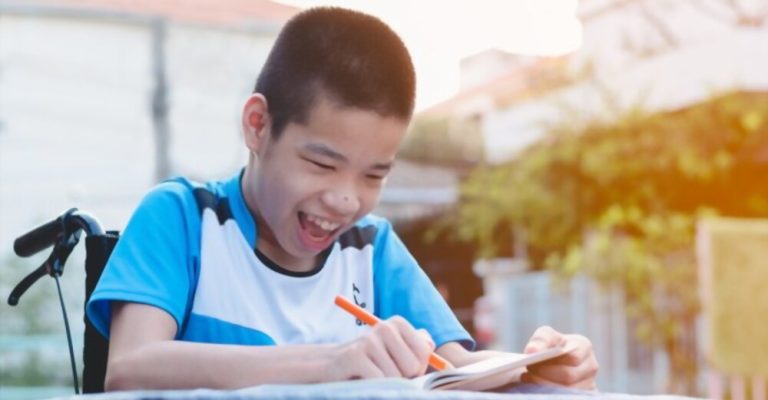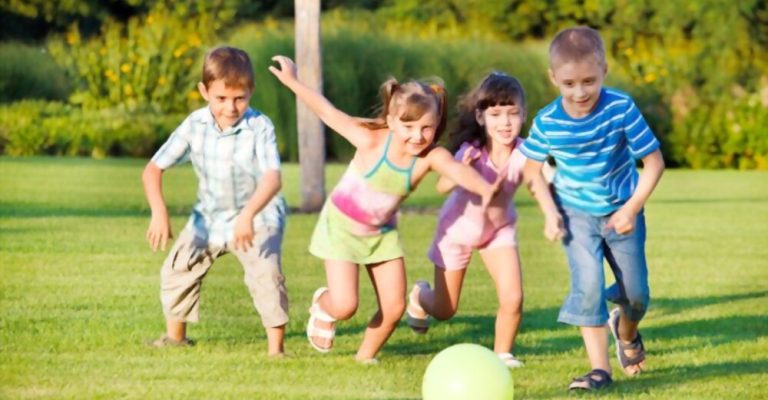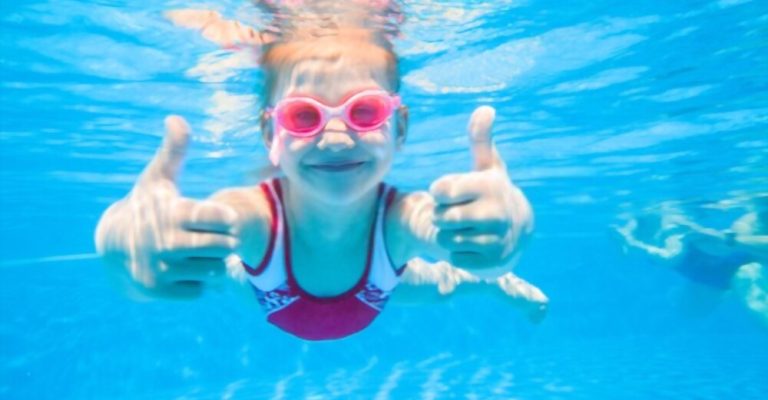
For children with cerebral palsy, regular physical activity is vital. When exercises and activities are tailored to these kids’ needs, it can make a huge difference in their overall well-being. Exercise helps improve mobility, build strength and coordination, reduce fatigue, and aid communication.
By engaging in the right type of exercises that target the specific issues associated with CP, children can enjoy greater independence and improved quality of life. In this blog post, we will give you some valuable tips and ideal exercises for children with cerebral palsy while encouraging them to have fun along the way!
The American Academy of Pediatrics recommends that kids with cerebral palsy engage in an hour of physical activity five days per week. However, not every physical activity has to be exciting. Engaging in fun physical pursuits may reap health benefits even more so than routine workouts.
Consultation with your kid’s physical or occupational therapist is the most effective approach to acquiring tailored exercise advice for your child’s condition. In this way, your child’s potential for growth will be maximized, and all the correct areas will be focused on. Each kid with cerebral palsy will have a unique road to rehabilitation. Your child’s particular demands will be better met with a tailored fitness plan.

There are fun ways to stay active. But, of course, play is the most effective technique to pique a child’s interest and inspire them to increase their physical activity. So let’s discuss some enjoyable exercises for children with Cerebral Palsy.
Swimming can be highly beneficial for improving mobility in children with cerebral palsy. One of the key advantages of swimming is the buoyancy provided by the water, which reduces the effects of gravity and makes movements easier. This buoyancy allows children with cerebral palsy to move more freely and can help improve their joint range of motion and overall mobility.
In addition to muscle strength, swimming can also improve coordination and balance. The coordinated movements required in swimming, involving the arms, legs, and body, help children develop better coordination skills. This improved coordination can then transfer to their movements on land, enhancing their overall mobility.
Swimming is an excellent aerobic exercise that increases heart rate and improves cardiovascular fitness. Children with cerebral palsy can enhance their cardiovascular endurance by engaging in regular swimming sessions. This increased endurance contributes to enhanced stamina and overall mobility.
For children with cerebral palsy who experience spasticity, swimming can provide relief. The warm water in a pool helps to relax and loosen tight muscles, reducing spasticity. This relaxation of muscles allows for smoother movements and can further enhance mobility.
Swimming also offers sensory benefits for children with cerebral palsy. The water provides sensory input through touch, pressure, and movement. This sensory experience can help improve body awareness, proprioception, and overall sensory integration, contributing to enhanced mobility.
Adaptive sports are designed to accommodate individuals with disabilities, including cerebral palsy, allowing them to participate and excel in various athletic activities. These sports programs are tailored to meet the specific needs of each participant, considering their mobility limitations and abilities.
Children with cerebral palsy can work on strength, coordination, balance, and flexibility through targeted training. In addition, the nature of adaptive sports challenges their physical abilities and encourages them to push their limits, leading to improved mobility over time.
Examples of adaptive sports that can benefit children with cerebral palsy include:
Moreover, adaptive skiing and snowboarding are also popular sports that significantly impact mobility in children with cerebral palsy. These sports provide a unique opportunity for children to improve their balance and coordination while also strengthening their core muscles.
The open space and varied terrain of a playground or sports field offer opportunities for children to work on their physical skills and enhance their mobility. It encourages children to engage in physical activities that require them to move their bodies differently.
For example, running, jumping, climbing, and playing games that involve gross motor skills help develop strength, balance, coordination, and overall mobility. These activities challenge children to use their muscles, joints, and motor skills in dynamic and functional ways, promoting the development of mobility skills.
It is crucial to create an inclusive and accessible environment on the ground to cater to the specific needs of children with cerebral palsy. Ensuring the ground has suitable pathways, ramps, and equipment modifications can facilitate safe and comfortable play.
When children with cerebral palsy ride a bike, they engage in a rhythmic pedaling motion that helps promote lower body strength and coordination. Pedaling requires the activation of leg muscles, including the quadriceps, hamstrings, and calf muscles, which contributes to improved muscle tone and endurance.
As children with cerebral palsy navigate the bike, they practice weight shifting, trunk control, and coordinated movements of the legs and arms. These aspects of cycling help improve balance, postural control, and overall coordination, which are crucial for mobility.
Cycling is a low-impact activity that puts minimal stress on the joints, making it a suitable form of exercise for children with cerebral palsy. It allows for repetitive and controlled movements without excessive impact, reducing the risk of strain or injury. The gentle motion of bike riding is especially beneficial for individuals with limited mobility or muscle tightness, as it encourages gentle stretching and movement of the leg muscles.
Furthermore, bike riding offers cardiovascular exercise opportunities, enhancing overall fitness and endurance. Engaging in regular cycling sessions helps improve heart and lung function, promoting cardiovascular health. Increased cardiovascular fitness improves stamina and energy levels, supporting greater mobility and participation in daily activities.
It is vital to choose an appropriate bike and make any necessary modifications or adaptations based on the individual needs of the child with cerebral palsy. Adaptations may include stabilizers, modified pedals, or custom seating to provide optimal support and comfort. It is advisable to consult with a healthcare professional or a trained therapist to ensure the bike is fitted correctly and safe for use.
Dancing can be a fantastic activity for improving mobility in children with cerebral palsy. The rhythmic movements, music, and expressive nature of dance provide a unique and engaging way for children to work on their physical skills and enhance their mobility. Dancing involves a wide range of movements, such as stretching, bending, twisting, and stepping, which can help improve flexibility, range of motion, and overall mobility.
Different dance styles, such as ballet, modern dance, or even adapted dance programs, offer diverse movements that target various muscle groups. Regular dance practice can help strengthen muscles, improve joint stability, and enhance overall physical abilities.
The music and rhythm in dance provide a natural motivation for movement and can help children with cerebral palsy develop better coordination and timing. Dance movements are often synchronized with the rhythm, requiring precise timing and coordination between different body parts. Through dance, children can learn to control their movements, improve balance, and refine their motor skills, leading to enhanced mobility.
Adapted dance programs specifically designed for children with disabilities, including cerebral palsy, can provide a supportive environment that addresses individual needs. These programs often incorporate modifications, assistive devices, and trained instructors who understand children with cerebral palsy’s unique challenges and abilities.
The adapted nature of these programs ensures that children can fully participate in dance activities, regardless of their mobility limitations, and experience the benefits of dance in a safe and inclusive setting.

Doing repetitive manual exercises during physical therapy can tire and frustrate your kid. Your kid will grow more active when you encourage them to play and participate in things they like. When trying to encourage to do exercises for children with Cerebral Palsy, it’s crucial to emphasize the positive rather than dwelling on the child’s limitations.